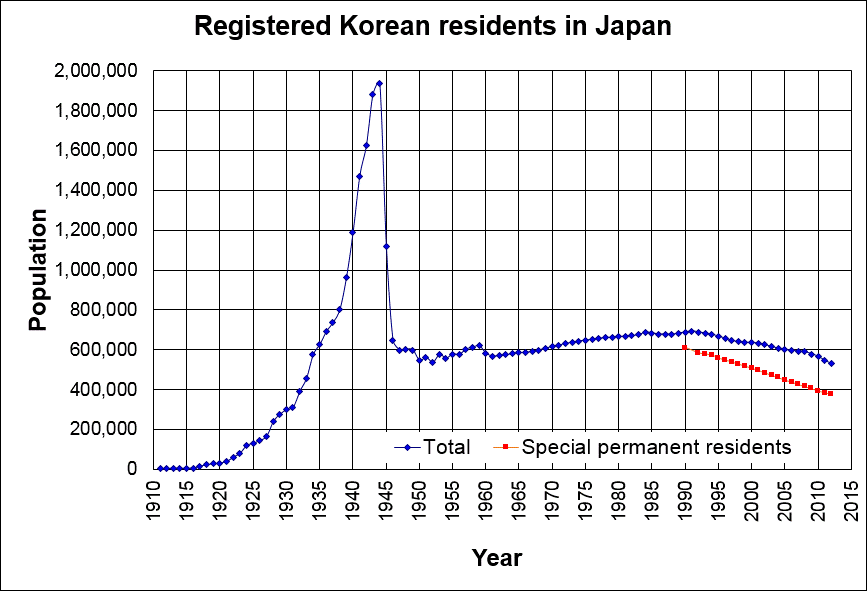|
Te Sun Han
Te Sun Han (born 1941, Kiryū) is a Korean Japanese information theorist and winner of the 2010 Shannon Award. He has made significant contributions concerning the interference channel and information spectrum methods.Te Sun Han, Information-Spectrum Method in Information Theory . Springer, 2003 In 1990, he was elected an IEEE Fellow As of 2019, the Institute of Electrical and Electronics Engineers (IEEE) has 5,082 members designated Fellow, each of whom is associated with one of the 41 societies under the IEEE. The Fellow grade of membership is the highest level of membershi ... for contributions to the theory of multiuser information systems and distributed signal detection systems. References External linksTe Sun Han's Webpage {{DEFAULTSORT:Han, Te Sun [...More Info...] [...Related Items...] OR: [Wikipedia] [Google] [Baidu] |
Han (Korean Name)
Han (Hangul 한, Hanja 韓) is the typical romanized spelling of the Korean family name. Other alternate spellings for 한 include Hahn and Haan. In hanja, it translates to "King”, “Kingdom”, “country" and/or “Korean people”. Han is the oldest name in Korea. Clans As with all the Korean family names, the holders of the Han surname are divided into different patrilineal clans, or lineages, known in Korean as ''bon-gwan'', based on their ancestral seat. Most such clans trace their lineage back to a specific founder. This system was at its height under the Joseon Dynasty, but it remains in use today. There are approximately 241 such clans claimed by South Koreans. Cheongju clan Cheongju Han clan is considered one of the noble clans of Korea, with the Gyeongju Kim, Gimhae Kim, Miryang Park, Gyeongju Seok, Pyeongyang Ko, and Jeonju Yi clans. In the Silla Dynasty, all of the Cheongju Hans were part of the seonggol rank. During the Joseon Dynasty, the Cheongju Han clan ... [...More Info...] [...Related Items...] OR: [Wikipedia] [Google] [Baidu] |
Kiryū, Gunma
is a city located in Gunma Prefecture, Japan. , the city had an estimated population of 108,991 in 49,745 households, and a population density of 400 persons per km2. The total area of the city is . Geography Kiryū is in the southeast part of Gunma, in the northern Kantō Plain near the Tochigi border. It is located approximately northwest of Tokyo. The city is also not far from Mount Akagi, a large but dormant volcano. The city consists of two separate geographic areas, with the city of Midori sandwiched in between. Situated at the foot of Mount Akagi, the city boasts one of the most beautiful settings in the Kantō region. Two rivers, the Kiryū and the Watarase River, run through the heart of the city and it is likewise surrounded by picturesque mountains to the north. Umeda, a district on the north side of the city, is well known for its cedar trees, while red pines are also common in other areas. Surrounding municipalities Gunma Prefecture * Maebashi * Isesaki * Ōta ... [...More Info...] [...Related Items...] OR: [Wikipedia] [Google] [Baidu] |
Koreans In Japan
comprise ethnic Koreans who have permanent residency status in Japan or who have become Japanese citizens, and whose immigration to Japan originated before 1945, or who are descendants of those immigrants. They are a group distinct from South Korean nationals who have emigrated to Japan after the end of World War II and the division of Korea. They currently constitute the second largest ethnic minority group in Japan after Chinese immigrants, due to many Koreans assimilating into the general Japanese population. The majority of Koreans in Japan are , often known simply as , who are ethnic Korean permanent residents of Japan. The term Zainichi Korean refers only to long-term Korean residents of Japan who trace their roots to Korea under Japanese rule, distinguishing them from the later wave of Korean migrants who came mostly in the 1980s, and from pre-modern immigrants dating back to antiquity who may themselves be the ancestors of the Japanese people. The Japanese word "Zaini ... [...More Info...] [...Related Items...] OR: [Wikipedia] [Google] [Baidu] |
Information Theory
Information theory is the scientific study of the quantification, storage, and communication of information. The field was originally established by the works of Harry Nyquist and Ralph Hartley, in the 1920s, and Claude Shannon in the 1940s. The field is at the intersection of probability theory, statistics, computer science, statistical mechanics, information engineering, and electrical engineering. A key measure in information theory is entropy. Entropy quantifies the amount of uncertainty involved in the value of a random variable or the outcome of a random process. For example, identifying the outcome of a fair coin flip (with two equally likely outcomes) provides less information (lower entropy) than specifying the outcome from a roll of a die (with six equally likely outcomes). Some other important measures in information theory are mutual information, channel capacity, error exponents, and relative entropy. Important sub-fields of information theory include s ... [...More Info...] [...Related Items...] OR: [Wikipedia] [Google] [Baidu] |
Claude E
Claude may refer to: __NOTOC__ People and fictional characters * Claude (given name), a list of people and fictional characters * Claude (surname), a list of people * Claude Lorrain (c. 1600–1682), French landscape painter, draughtsman and etcher traditionally called just "Claude" in English * Madame Claude, French brothel keeper Fernande Grudet (1923–2015) Places * Claude, Texas, a city * Claude, West Virginia, an unincorporated community Other uses * Allied reporting name of the Mitsubishi A5M Japanese carrier-based fighter aircraft * Claude (alligator) Claude is an albino alligator ('' Alligator mississippiensis'') at the California Academy of Sciences. Claude lacks the pigment melanin, resulting in colorless skin, and he has poor eyesight associated with his albinism. Background Claude was h ..., an albino alligator at the California Academy of Sciences See also * Claude's syndrome, a form of brainstem stroke syndrome {{disambig, geo ... [...More Info...] [...Related Items...] OR: [Wikipedia] [Google] [Baidu] |
IEEE Fellow
As of 2019, the Institute of Electrical and Electronics Engineers (IEEE) has 5,082 members designated Fellow, each of whom is associated with one of the 41 societies under the IEEE. The Fellow grade of membership is the highest level of membership, and cannot be applied for directly by the member – instead the candidate must be nominated by others. This grade of membership is conferred by the IEEE board of directors in recognition of a high level of demonstrated extraordinary accomplishment. * Aerospace and Electronic Systems Society ::See List of fellows of IEEE Aerospace and Electronic Systems Society * Antennas & Propagation Society ::See List of fellows of IEEE Antennas & Propagation Society *IEEE Broadcast Technology Society ::See List of fellows of IEEE Broadcast Technology Society * Circuits and Systems Society ::See List of fellows of IEEE Circuits and Systems Society * Communications Society ::See List of fellows of IEEE Communications Society * Components, Packaging & ... [...More Info...] [...Related Items...] OR: [Wikipedia] [Google] [Baidu] |
Detection Theory
Detection theory or signal detection theory is a means to measure the ability to differentiate between information-bearing patterns (called stimulus in living organisms, signal in machines) and random patterns that distract from the information (called noise, consisting of background stimuli and random activity of the detection machine and of the nervous system of the operator). In the field of electronics, signal recovery is the separation of such patterns from a disguising background. According to the theory, there are a number of determiners of how a detecting system will detect a signal, and where its threshold levels will be. The theory can explain how changing the threshold will affect the ability to discern, often exposing how adapted the system is to the task, purpose or goal at which it is aimed. When the detecting system is a human being, characteristics such as experience, expectations, physiological state (e.g., fatigue) and other factors can affect the threshold ... [...More Info...] [...Related Items...] OR: [Wikipedia] [Google] [Baidu] |
Living People
Related categories * :Year of birth missing (living people) / :Year of birth unknown * :Date of birth missing (living people) / :Date of birth unknown * :Place of birth missing (living people) / :Place of birth unknown * :Year of death missing / :Year of death unknown * :Date of death missing / :Date of death unknown * :Place of death missing / :Place of death unknown * :Missing middle or first names See also * :Dead people * :Template:L, which generates this category or death years, and birth year and sort keys. : {{DEFAULTSORT:Living people 21st-century people People by status ... [...More Info...] [...Related Items...] OR: [Wikipedia] [Google] [Baidu] |
1941 Births
Events Below, the events of World War II have the "WWII" prefix. January * January–August – 10,072 men, women and children with mental and physical disabilities are asphyxiated with carbon monoxide in a gas chamber, at Hadamar Euthanasia Centre in Germany, in the first phase of mass killings under the Action T4 program here. * January 1 – Thailand's Prime Minister Plaek Phibunsongkhram decrees January 1 as the official start of the Thai solar calendar new year (thus the previous year that began April 1 had only 9 months). * January 3 – A decree (''Normalschrifterlass'') promulgated in Germany by Martin Bormann, on behalf of Adolf Hitler, requires replacement of blackletter typefaces by Antiqua (typeface class), Antiqua. * January 4 – The short subject ''Elmer's Pet Rabbit'' is released, marking the second appearance of Bugs Bunny, and also the first to have his name on a title card. * January 5 – WWII: Battle of Bardia in Libya: Australian an ... [...More Info...] [...Related Items...] OR: [Wikipedia] [Google] [Baidu] |
Fellow Members Of The IEEE
A fellow is a concept whose exact meaning depends on context. In learned or professional societies, it refers to a privileged member who is specially elected in recognition of their work and achievements. Within the context of higher educational institutions, a fellow can be a member of a highly ranked group of teachers at a particular college or university or a member of the governing body in some universities (such as the Fellows of Harvard College); it can also be a specially selected postgraduate student who has been appointed to a post (called a fellowship) granting a stipend, research facilities and other privileges for a fixed period (usually one year or more) in order to undertake some advanced study or research, often in return for teaching services. In the context of research and development-intensive large companies or corporations, the title "fellow" is sometimes given to a small number of senior scientists and engineers. In the context of medical education in Nor ... [...More Info...] [...Related Items...] OR: [Wikipedia] [Google] [Baidu] |


